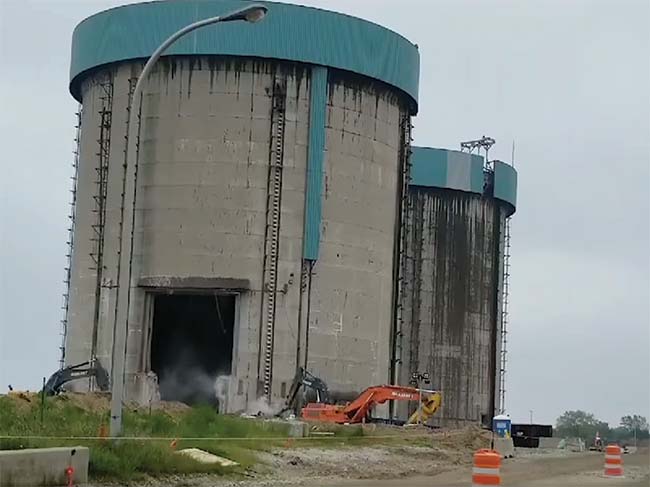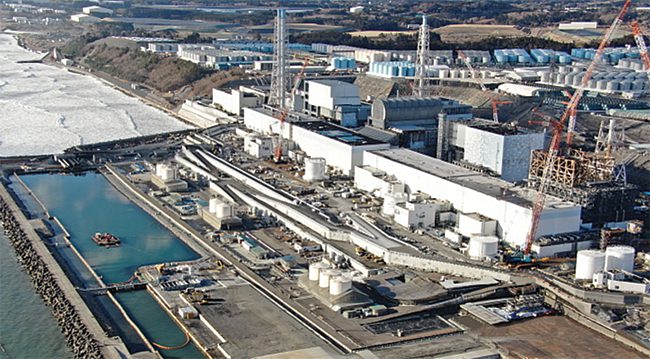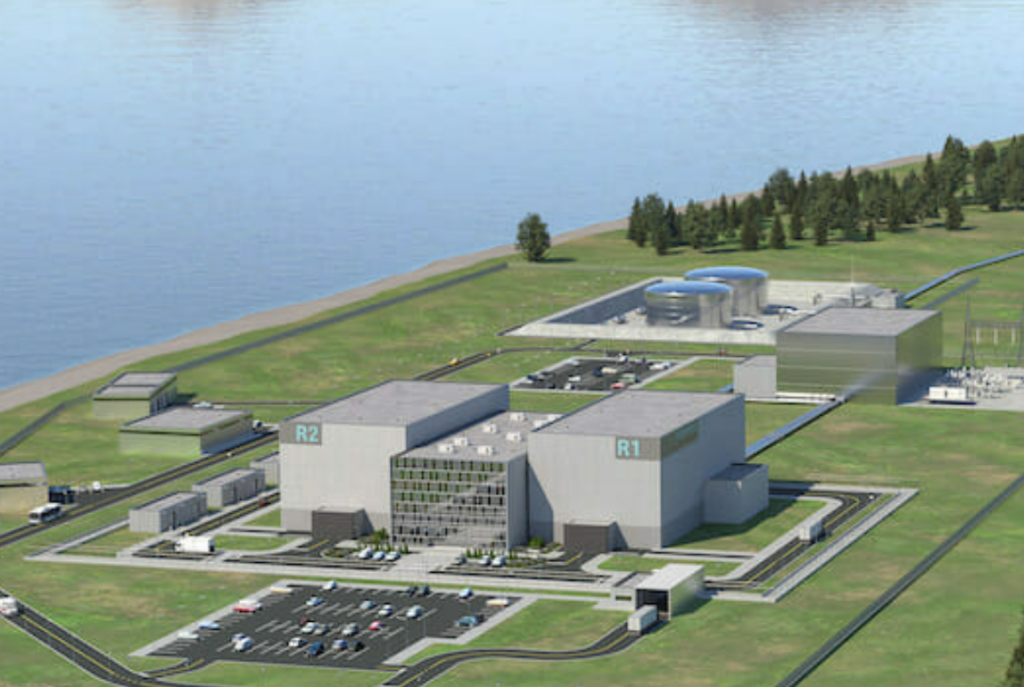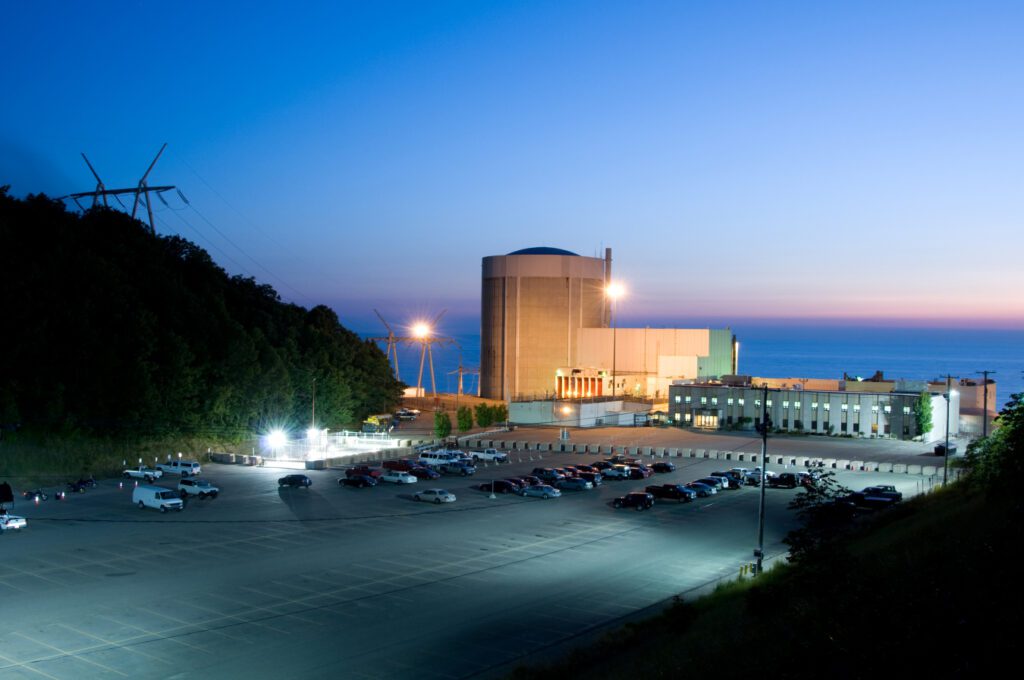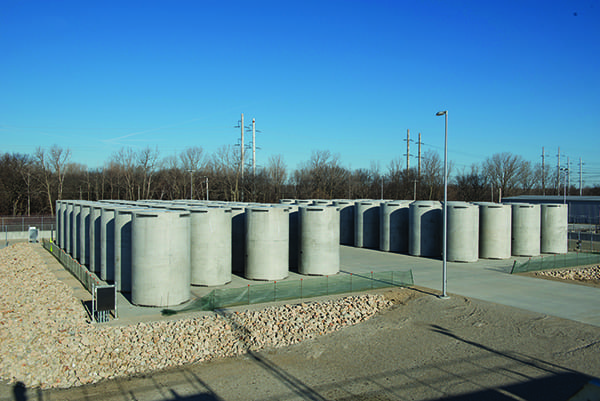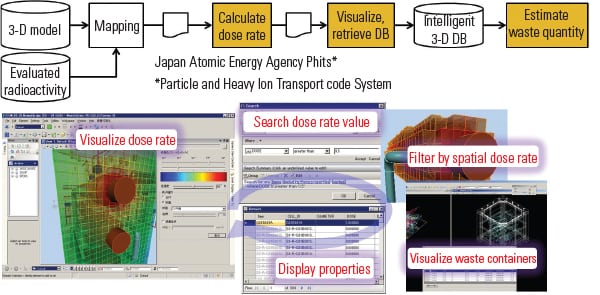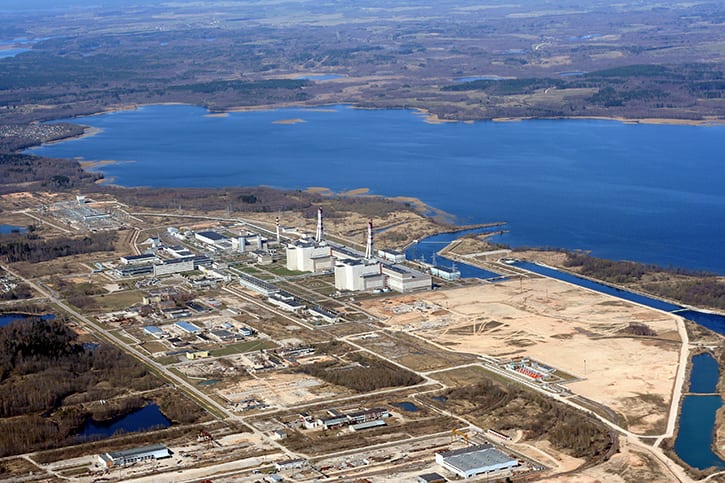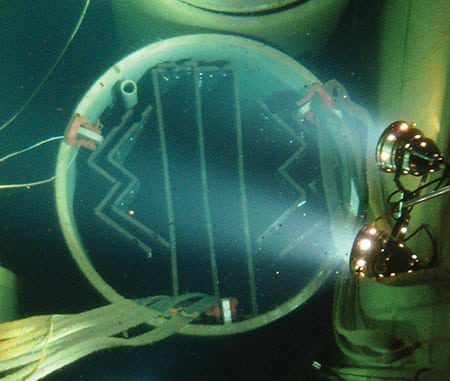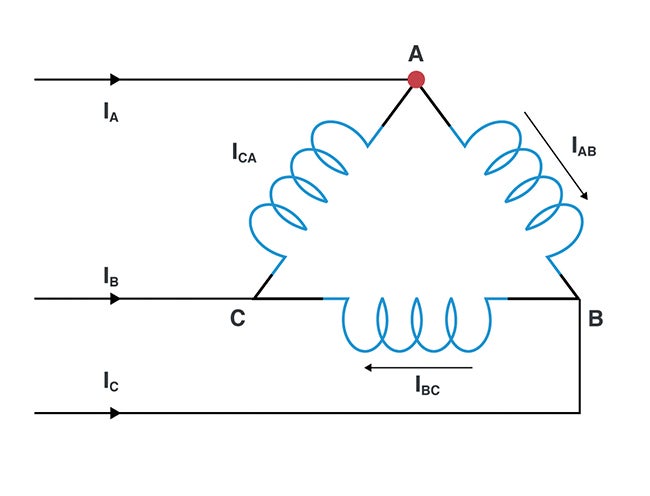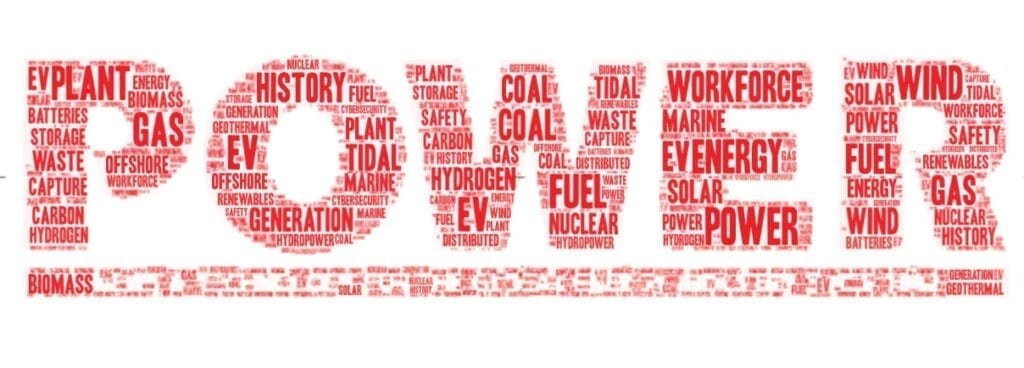Nuclear power plants are still being dismantled, and the business of decommissioning remains strong, but the need for more baseload power and emissions-free generation has some companies ready to restart idled units.
Policymakers and those involved in the energy industry recognize that demand for electricity is increasing, as are concerns about power generation’s impact on climate. Nuclear power is touted as a way to help on both fronts, providing a reliable source of energy and also doing it without harmful emissions.
Decommissioning of nuclear power plants, at times a decades-long process, has long marked the final chapter for atomic facilities. The energy industry has worked to refine the process, one that brings the challenge of safely dismantling a complex structure while also addressing environmental concerns. The need for effective decommissioning also speaks to why plant owners develop a plan for a reactor’s end of life even before a unit enters commercial operation.
The International Atomic Energy Agency (IAEA) has said, “Decommissioning refers to the administrative and technical actions taken to remove all or some of the regulatory controls from an authorized facility so the facility and its site can be reused. Decommissioning includes activities such as planning, physical and radiological characterization, facility and site decontamination, dismantling, and materials management.” The group adds, “Decommissioning is a normal part of a nuclear facility’s lifetime and needs to be considered at the earliest stages of its development.”
Today, though, there’s another discussion. Why tear down a nuclear power plant when its units could be restarted, at a time when more electricity—particularly emissions-free power—is sorely needed?
At least three U.S. plants have been mentioned as restart candidates, and Ali Zaidi, the White House climate adviser, last month said the Biden administration is working on plans to bring additional reactors back online to help meet soaring demand for emissions-free electricity.
 |
|
1. The Palisades nuclear power plant on the shore of Lake Michigan was closed in 2022. Holtec International was preparing to decommission the facility, but instead now plans to restart operations sometime in 2025. Courtesy: Entergy |
The Palisades nuclear plant in Michigan (Figure 1) could restart as soon as next year. Constellation Energy is working toward a restart of a unit at Pennsylvania’s Three Mile Island as part of a deal with Microsoft. And NextEra Energy has discussed bringing the Duane Arnold plant in Iowa back online. Zaidi, speaking at conference in New York on Oct. 7, and asked whether more closed plants could be restarted, said, “We’re working on it in a very concrete way. There are two that I can think of,” although he would not identify the facilities.
Dissecting Decommissioning
There are many steps that must be taken to decommission and dismantle a nuclear power plant, all with significant costs (which also may factor into restart decisions). Those who spoke with POWER about the process agreed it’s a time-consuming task, and safety must be a priority.
A company in charge of decommissioning will develop a plan that outlines the process, along with a timeline, which usually involves years of work. In the U.S., the Nuclear Regulatory Commission (NRC) oversees the entire process.
Power plant operators today are weighing the costs, and the timelines, as they look at whether tearing down a closed facility makes sense.
“The decommissioning of nuclear plants is a complex and expensive process that can take decades. It’s safety-related, but there’s the challenge of storing and adequately recycling radioactive waste, reusing the land on which these power plants sit, and otherwise dealing with the spent [fuel and equipment],” said Andrei Marveaux, an energy analyst involved with optimizing electricity use, and managing director at Solartech Solutions/The Home Upgrade. “As more nuclear plants reach the end of their life cycles, decommissioning will become an increasingly relevant issue.”
As part of decommissioning, a nuclear facility must be decontaminated to reduce residual radioactivity. That’s work that continues as buildings are torn down and other infrastructure is dismantled, with any contaminated materials removed for proper disposal. Used nuclear fuel is removed from each reactor and placed into storage, often onsite and in containers specifically made for that purpose. Some used fuel may be transported off-site to an interim storage facility or reprocessing plant. Once the NRC determines the site is safe, it can be “released” for other uses (see sidebar “Zion Nuclear Power Station”).
Zion Nuclear Power StationIt’s been a year since the U.S. Nuclear Regulatory Commission (NRC) released for “unrestricted use” most of the land on and around where the Zion Nuclear Power Station operated in northern Illinois, along the shore of Lake Michigan. The plant, located about 40 miles north of Chicago and 42 miles south of Milwaukee, Wisconsin, served the Chicago area. The plant’s decommissioning has served as one of the more high-profile case studies of a nuclear shutdown project due to the plant’s proximity to two major metropolitan areas. Zion had two pressurized water reactors that were in service from 1973 until 1997. Commonwealth Edison, the plant’s operator, permanently shut the plant in 1998. The NRC in November 2023 said any residual radiation is below the NRC’s limits, and the agency will no longer put regulatory controls on the property—save for about five acres that are home to the plant’s independent spent fuel storage installation, or ISFSI, which will remain under NRC license and oversight.
Zion’s licenses in 2010 were transferred from Exelon Generation, now Constellation Energy, to ZionSolutions, which is a subsidiary of radioactive waste disposal company EnergySolutions, headquartered in Salt Lake City, Utah. ZionSolutions completed the majority of Zion’s decommissioning work by 2019; the NRC approved the transfer of Zion’s licenses back to Constellation that same year, on the condition that the site’s final status surveys were completed to the satisfaction of the agency. The NRC did find some radioactive contamination at the site, which required additional remediation and delayed the final status survey reviews. The NRC said the radiation was found in particles released from Zion’s containment buildings (Figure 2), and the fuel handling building, during decommissioning work. The NRC on Nov. 8, 2023, told ZionSolutions it had completed its review of the survey reports. The agency said it found “reasonable assurance” that the residual radioactivity at the site met the agency’s radiation protection standards. The transfer of the ISFSI license to Constellation, just days after the NRC completed its review in November 2023, means Constellation is responsible for the security and protection of the spent fuel at the site, until an off-site storage facility or permanent disposal site becomes available. |
James Walker, CEO and head of Reactor Development and a board member at NANO Nuclear Energy, told POWER, “Decommissioning is essential to protect public health by removing or safely containing radioactive materials. If not properly managed, residual radioactivity could pose serious health risks to the surrounding community, including potential contamination of air, water, and soil.”
Walker noted that “the plant operator must adhere to strict regulatory requirements set by national nuclear safety authorities. This involves submitting a decommissioning plan, which details the approach, timelines, and safety measures.”
The IAEA has defined three options for decommissioning. The group said these definitions have been adopted as international standards.
One option is immediate dismantling, or early site release, often called DECON. The U.S. Energy Information Administration (EIA) calls DECON a “relatively faster method of decommissioning a nuclear reactor and involves removing all fuel and equipment from the power plant. The fuel and equipment represent the bulk of the irradiated material on the site and are removed for separate storage and decontamination. DECON can take at least seven years and allows for the relatively quick return of the land for reuse.”
Safe Enclosure, also known as SAFSTOR, is what the NRC defines as a facility “placed and maintained in a condition that allows the facility to be safely stored and subsequently decontaminated [deferred decontamination].” The IAEA has said this option allows a longer period for the final removal of controls at a site, for as much as 40 to 60 years. The EIA said the SAFSTOR timeline “allows for up to 50 years of containment followed by up to 10 years for decontamination.” A facility placed in a safe storage configuration is dismantled, and decontaminated, after residual radioactivity has decayed. Industry experts note that this could increase the costs of decommissioning a site, and also have said regulatory changes could impact the process.
A facility also can be “entombed.” The IAEA says the ENTOMB option “entails placing the facility into a condition that will allow the remaining on-site radioactive material to remain on-site without ever removing it totally.” Entombment—which the EIA said is not used in the U.S.—usually means the size of an area of radioactive material is reduced as much as possible, with the affected area then encased, usually in concrete. Officials said this is done to limit exposure to remaining radioactivity. The Chernobyl site in Ukraine is an example of a reactor that has been entombed.
‘No Easy Process’
Stantec is a global engineering firm with subject matter experts who have been involved in the decommissioning of energy sites, as well as remediation and restoration.
“Decommissioning a nuclear plant is no easy process. Irradiation and contamination of plant and equipment makes the operation extremely challenging,” said Jag Singh, regional sector lead of Clean Generation for Stantec. “Furthermore, the lack of historic data-keeping on older plants makes the spent fuel and waste forms problematic to manage and handle. The essential first step is the decommissioning plan that will outline the process, stakeholders, timelines, strategies, finances, supply chain, and resources.”
Singh told POWER, “The environmental and safety assessments are paramount before initiating the actual decommissioning, and feeds into the overall planned shutdown. It’s critically important to plan for the waste management routes as orphan waste forms can be detrimental to the decommissioning of the site. Also, decontamination giving rise to secondary and tertiary waste streams needs to be considered. In fact, these are just a few topics that need to be addressed before the granting of a license to decommission.”
Singh added: “Stakeholder management is key, from the country’s regulator to the local public. A decommissioning project is a very high-profile endeavor that requires meticulous planning and communication.” Singh reiterated that full decommissioning of a nuclear power plant or other nuclear facility can take years. Industry officials have said a nuclear reactor decommissioning typically takes 15 to 20 years, and can cost hundreds of millions or even billions of dollars. A large fuel cycle facility can take even longer, at an even larger cost.
Smaller Reactors
The decommissioning of a research reactor, such as at a laboratory or military base (see sidebar “Fort Greely in Alaska”), also can take several years and cost several million dollars. Officials have said the cost depends on the reactor’s size, purpose, and operational history.
|
Fort Greely in Alaska Demolition work is proceeding on a reactor facility at the Fort Greely military base in Alaska. Louisiana-based Aptim Federal Services (APTIM) in October 2023 said it was awarded a contract from the U.S. Army Corps of Engineers (USACE)-Baltimore District to decommission and dismantle the 20.2-MW SM-1A Reactor Facility located at Fort Greely, about 175 miles south of the Arctic Circle, near Delta Junction. The SM-1A (Stationary, Medium Size) is the last remaining nuclear reactor built as part of the Army Nuclear Power Program, which operated from 1954 to 1978. Government officials in 1954 assigned the Army responsibility for “developing nuclear power plants to supply heat and electricity at remote and relatively inaccessible military installations,” according to a memo from the Department of Defense.
The reactor at Fort Greely (Figure 3) was among nine built to serve the Army, Navy, and Air Force. The decommissioning work is part of the USACE Deactivated Nuclear Power Plant Program. Among its most recent projects prior to Fort Greely were the decommissioning and dismantling of the historic 10-MW MH-1A STURGIS barge, the first floating nuclear power station (Mobile High Power Nuclear Reactor 1A). The project was deemed complete when the final section of the STURGIS barge was brought ashore for processing and recycling at the International Shipbreaking facility at the Port of Brownsville, Texas, in 2019. Decommissioning and dismantling of the 2-MW SM-1 reactor was completed at the end of last year, when the USACE said all large reactor components had been removed from the vapor container structure of the SM-1 on the western shore of the Potomac River at Fort Belvoir, Virginia. The group also said all above-grade demolition was complete. APTIM said its team will manage the Fort Greely project, and “will integrate and utilize mature, proven innovations to dispose of both hazardous and radioactive soil and debris from the remote Alaskan installation,” transporting it to the U.S. mainland. Initial work involves construction of a weather enclosure to support working conditions at the site. APTIM has said it expects to complete the decommissioning project by 2029. The decommissioning contract was awarded to APTIM-Amentum Alaska Decommissioning LLC (A3D), which is a joint venture led by APTIM and Amentum Technical Services LLC. APTIM said the contract “has an estimated value of $95.5 million, over a six-year ordering period. The work to be performed under this contract includes planning, permitting, and engineering; site preparation; demolition and disposal of facilities, including components from the deactivated and defueled nuclear reactor, related wells and utility corridors, plus other ancillary facilities. The contract also includes remediation of contaminated soils, a final status survey, and site restoration.” David Lowe, senior vice president of APTIM’s Nuclear Decommissioning business unit, said at the time of the contract award: “APTIM and our heritage companies have a long history of supporting USACE and the Army Reactor Office (ARO) and have managed numerous Decontamination and Decommissioning projects across the federal complex. Our extensive experience performing reactor decommissioning projects for USACE and the ARO enables us to bring advanced innovations and solutions to complete the work safely and effectively at Fort Greely. We will partner with USACE, regulators, and community stakeholders to eliminate the environmental liabilities of this legacy, aging nuclear facility.” |
The IAEA has said, “The management approach to the decommissioning of nuclear power plants and other large facilities is broadly applicable to smaller projects,” but also notes, “The decommissioning of small facilities should not be underestimated. Under certain conditions, a small project may face a range of issues as challenging to the licensee or operator as the decommissioning of power reactors is to other licensees. Additionally, since the design intent was often to conduct research or to use radioactive material for medical or industrial applications, decommissioning was rarely a consideration in design or during operation.”
Singh said that in any case, “Timelines are important and decommissioning programs are notoriously long.” It is imperative that the front-end of the program is loaded so that the feed and strategies are defined and the design activities and plans can progress smoothly.
“In certain cases, the nuclear safety case of a plant may limit the amount of time that nuclear material may be able to be contained or handled in the specific medium,” said Singh. “And the decommissioning plan must address what must be done to safely secure that medium for the long term.”
Singh said Stantec builds “entire specific plants for nuclear decommissioning. This is everything from retrievals to characterization labs to gloveboxes and hot cells. There should be a predefined route and waste management strategy for all solids, effluents, and off-gas waste streams. The equipment and plants will be designed and built to facilitate these processes.”
Singh said safe decontamination of materials in a nuclear power plant is paramount. “The use of hot cells and gloveboxes with remotely operated equipment is essential,” said Singh. “Decontamination may give rise to secondary and tertiary waste routes.”
Systematic Dismantling
Walker in his outline of the decommissioning process noted it “involves the systematic dismantling of reactor components, such as the reactor vessel, steam generators, and piping systems. Specialized techniques, including remote-controlled machinery, are often used due to high radiation levels.” He said waste segregation is important, with materials “categorized as radioactive or non-radioactive. Radioactive materials are further classified based on their level of radioactivity, guiding their disposal method.” A power plant operator also may establish a decommissioning fund to ensure the finances of the process are properly managed and costs are controlled.
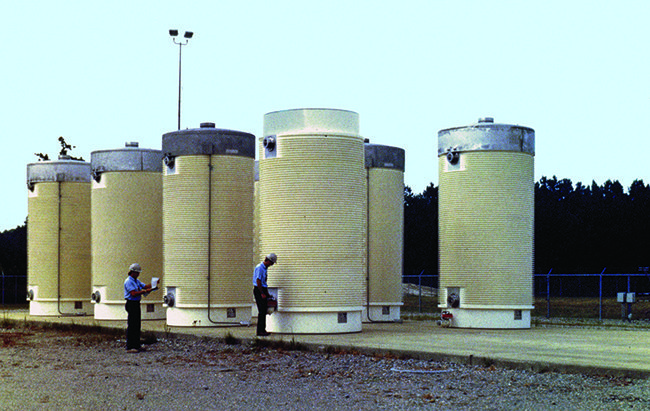 |
|
4. Dry cask storage of spent nuclear fuel is a common practice at decommissioned nuclear power plant sites. Source: U.S. Nuclear Regulatory Commission |
Walker told POWER that the removal of spent nuclear fuel “is one of the first steps. Fuel assemblies are typically transferred to onsite spent fuel pools or dry cask storage (Figure 4) until they can be permanently disposed of or reprocessed. All radioactive materials, including contaminated structures and soil, must be safely managed.”
Remediation and environmental restoration of a site involves several measures. The site must be “characterized” to identify contamination levels, with that assessment guiding the cleanup process, according to Walker. Soil and groundwater remediation is another step. Said Walker: “Contaminated soil and groundwater are treated or removed to meet regulatory standards for site reuse. The goal is to restore the site to a condition that allows for safe future use, which may include unrestricted use, industrial use, or greenfield status.”
Radiation protection programs also are part of a decommissioning, with programs implemented to monitor and minimize radiation exposure for workers. Those onsite will wear personal protective equipment, or PPE, and utilize dosimeters, a device that measures radiation. Workers also will undergo regular health monitoring.
Stantec’s Singh said it’s also important to keep the surrounding community informed of what’s happening at a site. “Public engagement is extremely important. The success of these programs is tied to the socioeconomic benefits to, and positive perceptions of, the public,” said Singh. “The impact to the local economies is profound and community outreach is essential, from education of the younger generations to the benefits of clean energy and engineering.”
Walker agreed with Singh that public outreach is a critical step, telling POWER, “The public’s safety is prioritized. This involves clear communication about risks, progress, and safety measures, and ensuring that all activities comply with environmental and public health regulations.”
A final survey of a decommissioned site is conducted before the NRC will release the property, with the agency ensuring it meets the regulatory criteria for decontamination. The NRC also handles any licensing issues. The agency said about “100 materials licenses are terminated each year. Most of these license terminations are routine, and the sites require little, if any, remediation to meet the NRC’s criteria for unrestricted release.” Some long-term surveillance of a site, along with monitoring, may be required if radioactive material remains onsite, such as in the case of entombment.
Walker noted another part of the decommissioning process, which he said “can significantly impact the local economy, especially in communities where the plant is a major employer. Planning for economic transition, job retraining, and site reuse is often a critical component.”
Dismantle? How About Restart?
Talk of decommissioning nuclear power stations, at least in the U.S., has turned to restarting closed facilities. Holtec International, which acquired the shuttered 800-MW Palisades nuclear plant in Michigan after Entergy—citing poor economics—closed the power station in 2022, could be the first U.S. nuclear power plant to restart after decommissioning. Holtec has said Palisades could return to service as soon as late next year.
 |
|
5. NextEra Energy is exploring a possible restart of the Duane Arnold nuclear power station in Iowa. The plant was taken out of service in 2020. Courtesy: NextEra Energy |
NextEra has said it is exploring the restart of the 615-MW Duane Arnold nuclear plant in Iowa (Figure 5), which was taken out of service in 2020. Constellation Energy has said it could restart a reactor at the Three Mile Island (TMI) site in Pennsylvania, famously the location of a partial meltdown of Unit 2 at the site in 1979. Unit 1 at TMI, which came online in 1974 and remained in operation after Unit 2 was closed, was taken offline in 2019. Constellation and Microsoft in September of this year signed an agreement in which the tech giant would use the electricity from a restarted 835-MW Unit 1 to power its data center operations.
Jeffrey Jakubiak, partner of Energy Regulation at Vinson & Elkins law group, told POWER: “The restarting of nuclear facilities is precisely what needs to get done to meet the rapidly growing energy demand in the face of carbon reduction goals. Wind and solar generating facilities are increasingly difficult to site and connect to the grid. So, the best and fastest path to increasing carbon-free generation at this point is restarting nuclear facilities.”
With the U.S. government helping fund restarts, and also supporting a buildout of new nuclear power resources, plant owners are reconsidering their options. Steve Everley, senior managing director in FTI Consulting’s Energy and Natural Resources practice, told POWER restarts make sense in the current energy landscape.
“What’s driving this? For one, rapid load growth from data centers, AI [artificial intelligence], and advanced manufacturing, as well as electrification efforts. Major grid managers are warning of price spikes in the years ahead because of growing demand and limited supply,” said Everley. “It’s not a simple process in an absolute sense, but shifting from decommissioning to restart for nuclear power plants may be the best option in some areas, since no other power source can provide the same volume of reliable power (i.e. 92% capacity factor) as nuclear.”
Everley added, “The other factor is climate policy, specifically aggressive emissions reductions targets. The deployment of wind and solar has been accelerating but is by no means at a pace consistent with meeting climate goals. There has been a dramatic reversal of opinion about nuclear in recent years, given it emits zero CO 2 and can provide baseload power.”
Mike Capone, CEO of Qlik, a Pennsylvania-based software company and AI platform, told POWER: “Amazon, Google, and Microsoft’s investments in nuclear energy highlight how the future of AI depends on building sustainable, reliable infrastructure. These long-term investments signal confidence in AI’s enduring role in the market.
“There’s also a win-win here—AI can drive efficiencies that help reduce waste, optimize energy use, and accelerate breakthroughs in sustainability. It’s a strategic loop: clean energy powers AI, and AI, in turn, finds smarter ways to manage and reduce energy consumption. This is where the intersection of technology and sustainability can truly shine, leading to a future where innovation and responsibility go hand in hand.”
Both Amazon and Google are looking at small modular reactors to power data centers, and Amazon Web Services earlier this year acquired a data center campus in Pennsylvania that receives its power from the nearby Susquehanna nuclear power plant.
Palisades, Duane Arnold, or TMI would not be the first U.S. nuclear power plant to return to service after a lengthy closure. Three reactors at the Browns Ferry plant in Alabama were restarted after being shut down in 1985 due to operational and management concerns. Unit 2 at Browns Ferry was returned to service in 1991, with Unit 3 restarted in 1995. Unit 1 was offline for 22 years before being restarted by the Tennessee Valley Authority in 2007.
DOE Financial Support
The DOE in March of this year announced a $1.52 billion conditional loan commitment to support the recommissioning of Palisades, and the DOE’s Loan Programs Office announced closure of the loan on Sept. 30. State officials in Michigan also have committed $300 million to the effort. The U.S. Department of Agriculture in September awarded Michigan-based Wolverine Power Cooperative, along with Indiana-based Hoosier Energy, money from the Empowering Rural America program, a $9.7 billion fund established by the Inflation Reduction Act, to support buying power from Palisades. The fund is designed to help rural U.S. electric cooperatives transition to clean energy. A Wolverine spokesperson told the Bridge Michigan news service the utility received more than $600 million from the fund.
Michigan Gov. Gretchen Whitmer has said that by restarting Palisades, “We are showing the world that Michigan will continue to lead the future of clean energy.”
“This loan funding is not only a critical financial milestone but a bellwether for the vital role that nuclear energy will play in securing our clean energy future,” said Dr. Kris Singh, founder and CEO of Holtec International. “The repowering of Palisades is a testament to our dedication to revitalizing the nuclear industry and ensuring a sustainable, carbon-free energy source for generations to come. It is also a tremendous credit to the strong backing we have received from our partners in the federal government, State of Michigan, local community, and throughout the nuclear industry.”
Several groups have pushed back against a Palisades restart, citing the plant’s history of safety violations, including its designation as one of five commercial facilities with the most “high-level” safety violations, according to a 2013 report from the NRC. The NRC in November of last year established the Palisades Nuclear Plant Restart Panel (PRP), a group whose “primary objective is to proactively identify and promptly resolve any licensing, inspection, or regulatory challenges that concern the Palisades restart. To accomplish this objective, the PRP provides high-level assessments, coordination, oversight, and management direction of NRC activities associated with the licensing, inspection, testing, and operation of Palisades.”
John Ketchum, CEO of NextEra Energy, in June of this year during an investors meeting said, “I think there would be opportunities and a lot of demand from the market if we were able to do something with Duane Arnold.” He said a restart of the plant located in Palo, Iowa, would require examination. “Obviously, bringing back a nuclear plant is… not something you can do without a lot of thought,” he said. Ketchum noted the company would need to weigh the risks of such a move.
Said Ketchum: “So sure, we’re looking at it, but we would only do it if we could do it in a way that is essentially risk-free with plenty of mitigants around the approach. There are a few things that we would have to work through, but yes, we are. We are looking at it.”
 |
|
6. Microsoft has a 20-year power purchase agreement with Constellation Energy for electricity from Unit 1 at Three Mile Island in Pennsylvania. Constellation has a plan to restart the reactor, which was shut down in 2019. Source: U.S. Department of Energy |
Microsoft has a 20-year power purchase agreement with Constellation for electricity from Unit 1 at TMI (Figure 6). Constellation in a statement said “significant investments will be made to restore” the unit, “including the turbine, generator, main power transformer, and cooling and control systems.” The property will be renamed the Crane Clean Energy Center, with the restart expected in 2028.
Constellation noted, “Restarting a nuclear reactor requires NRC approval following a comprehensive safety and environmental review, as well as permits from relevant state and local agencies. Additionally, through a separate request, Constellation will pursue license renewal that will extend plant operations to at least 2054.”
Bobby Hollis, vice president of energy for Microsoft, in a statement said, “This agreement is a major milestone in Microsoft’s efforts to help decarbonize the grid in support of our commitment to become carbon negative. Microsoft continues to collaborate with energy providers to develop carbon-free energy sources to help meet the grids’ capacity and reliability needs.”
Constellation in a September presentation to investors said the company plans to spend about $1.6 billion to restart TMI. The company said the work would require “significant investments” in major systems at the facility, along with a three-year relicensing engagement with the NRC. The group also would need to go through a three-year interconnection application and study process with PJM Interconnection (the regional grid operator) and the Federal Energy Regulatory Commission.
Constellation in the presentation said it already has inspected key power system components of Unit 1, and started work to restore its training simulator. It also said it has begun the process for a supply of nuclear fuel and long-lead materials and equipment. The group in the presentation said it still would need to conduct more inspections, along with restoration work and testing. Installation of a main power transformer, along with workforce training and development, also would be needed. The Reuters news service on Oct. 16 reported Constellation has ordered a $100 million transformer, which would likely be the largest single piece of equipment needed for a restart.
Reuters was part of a tour of the facility on Oct. 16 that included Constellation executives. The news service quoted Bryan Hanson, Constellation’s vice president of Generation, as saying, “I have walked the facility top to bottom, every floor. The plant is in great condition.”
Recent Decommissioning Work
The experts who spoke with POWER noted that each power plant operator creates a fund to pay for decommissioning work as part of the upfront cost of building a reactor. The World Nuclear Association said about two-thirds of the total estimated cost of decommissioning all U.S. nuclear reactors—more than 90 are operating—already has been collected. There could be additional expenses, though, when units are retired earlier than planned (see sidebar “The Situation at Fukushima”).
The Situation at FukushimaMuch attention about the cleanup of nuclear power sites in recent years has focused on the Fukushima Daiichi site in Japan. A major earthquake on March 11, 2011, followed by a massive tsunami, knocked out the power supply at the plant, which disabled the cooling of three reactors, with all three cores melting within three days. Japan took its entire nuclear power fleet offline after the disaster, and has only restarted about a dozen facilities in recent years as it has worked to improve safety standards at its atomic power plants.
Decommissioning work at Fukushima (Figure 7) has been ongoing; officials provided an update at the International Atomic Energy Agency (IAEA) General Conference in Vienna, Austria, in September. The Japanese government, the Nuclear Damage Compensation and Decommissioning Facilitation Corp. (NDF), and Tokyo Electric Power Co. (TEPCO), the plant’s operator, are all involved in the work. Officials said the decommissioning of the site and its surroundings is scheduled to be completed by 2051, or 40 years after the cold shutdown of the plant. Nuclear fuel began being removed from the site in November 2013, with officials noting the process for each reactor is different. Fuel removal from used fuel pools was completed for Unit 4 in December 2014, and for Unit 3 in 2021. Another phase of the process began in September of this year, with the start of trial fuel debris removal in Unit 2, with a goal to start removing fuel from Unit 2 this year, and from Unit 1 sometime in 2027 or 2028. Officials said some technological innovations will be needed at the site, including ways to accomplish removal of fuel debris from the reactors. Officials said there is uncertainty about the fuel distribution in each of the reactors. Yoshitomo Mori, an official from Japan’s Environment Ministry, in the Vienna presentation said that since 2014 about 13.76 million cubic meters of soil and waste had been removed from Fukushima and transported to an interim storage facility set up to take materials after decontamination. Officials said contaminated water from Fukushima is being treated by an Advanced Liquid Processing System (ALPS), which removes most of the radioactive contamination, with the exception of tritium. This treated water is currently stored in tanks onsite. Japanese officials in April 2021 said the country would discharge ALPS-treated water into the sea over about a 30-year period, and releases began in August of last year. Officials said there have been nine releases as of the end of September. TEPCO has prepared an interactive video guide to the decommissioning process at Fukushima. TEPCO also provides cameras with live images of the site. |
Recent projects in the U.S., in addition to those mentioned earlier, include the 619-MW Haddam Neck plant in Connecticut, which was taken offline in 1997. The plant was decommissioned using the DECON method, with work completed in 2007 at a total cost of $893 million, according to the EIA.
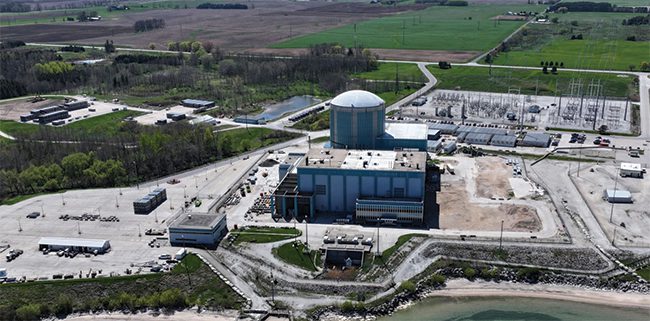 |
|
8. The Kewaunee nuclear station in Wisconsin was closed in 2013. Dominion Power, the plant’s operator, said decommissioning will likely continue until 2073, at a cost of about $1 billion. Courtesy: EnergySolutions |
The 556-MW Kewaunee Nuclear Power Plant in Wisconsin (Figure 8) was closed in 2013. Dominion Power, the plant’s operator, has said it anticipates a total cost to decommission the plant at nearly $1 billion. The plant is being decommissioned using the SAFSTOR method, and Dominion Power has said it estimates work will not be complete until 2073.
Orano Decommissioning Services completed its project at the Vermont Yankee Nuclear Power Station in late 2022. The company said work included the full segmentation, packaging, and disposal of the reactor vessel (RV) and other components at the 620-MW plant, which was shut down by Entergy in late December 2014. Orano said its work at the site was accomplished in less than four years.
Orano wrote that the Vermont Yankee (VY) project “represented the first full segmentation decommissioning of a commercial-scale boiling water reactor in the U.S. and presented the opportunity to demonstrate several first-of-a-kind technologies. The VY decommissioning project execution involved the full segmentation of the RV and RVI [reactor vessel internal] components as opposed to removal of the vessel while relatively intact. The full segmentation method was chosen early in project planning due primarily to the size of the RV and the limited locally accessible transportation infrastructure.”
The company also said that high-activity low-level radioactive waste, “including Class B/C and high-activity Class A, was packaged and shipped using the new Orano Transnuclear (OTN) Radioactive Waste Canister (RWC) system.” The group said, “OTN had designed and fabricated an MP197HB dual-purpose transport cask for commercial use prior to work starting at Vermont Yankee. This was the first time this transport cask had been used, and it transported seven loaded RWCs from Vermont to WCS [Waste Control Specialists] in West Texas via railway safely and efficiently.”
 |
|
9. A barge with four packages containing the remnants of the Crystal River nuclear power plant arrives on the Texas coast after crossing the Gulf of Mexico from the power station’s former home in Citrus County, Florida. Courtesy: Orano USA |
Orano in October of this year said it also completed a segmentation project that included transportation and disposal of the dismantled Crystal River Unit 3 (CR3) reactor, a facility that operated in Crystal River, Florida. Orano said the project, which included segmentation, packaging, and removal of the 35-foot nuclear reactor vessel and its internal components, was completed in less than two years. The company said its work, involving removal of the large cooling system components, and the off-site shipment (Figure 9) and final disposal of all generated low-level waste, was completed in less than four years.
The Crystal River decommissioning included transport of equipment, placed in four packages, on a single barge across the Gulf of Mexico from the nuclear plant’s site on Florida’s Gulf Coast in Citrus County to Texas. The packages were then separately transported via truck hundreds of miles to the WCS disposal site in Andrews County in West Texas. Orano said the company also “conducted 10 disposal shipments by rail of the CR3 reactor coolant system, including a pressurizer, four reactor coolant pumps, and four motors, plus the reactor vessel’s integrated head assembly containing the control rod drives and service structure.”
—Darrell Proctor is a senior editor for POWER.



